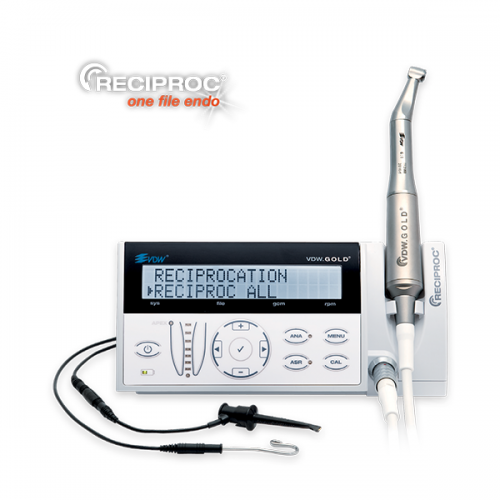Endodontics

Endodontics is a field of dentistry which deals with the treatment of dental pulp.
It comprises the removal of the pulp and cleaning and filling of the root canal, which removes the pain and enables the preservation of the tooth.

In our office all endodontic treatments are performed under local anesthesia, which ensures the painlessness of the treatment. The root treatment is done by manual and mechanical instruments with the control of the working length by an apex locator.
The technique of machine-processing the root canal in combination with the use of lasers and piezoelectric devices and intra-canal disinfectants enables a significantly greater reduction of bacteria in infected root canals and the achievement of desired results in a smaller number of visits.
The optical fiber thread introduced into the root canal allows a high decontamination up to 1100 μm within the canal walls. It is important to note that classical chemical agents penetrate up to 100μm, but bacterial colonies can be found even up to 700μm - 900μm depth. In other words, the endodontic laser treatment offers a very high level of root disinfection.
When it is necessary to perform root canal treatment on the tooth (to remove the tooth pulp)
Teeth that had immediate procedures or teeth with large fillings, deep cavities, fractures and trauma could cause damage to the tooth pulp, caused by irritation or infection. The tooth pulp may react with an infection (pulpitis) or gradual dying of tissue (necrosis) that may occur without symptoms. Once the bacteria enter the cavity of the tooth, they spread through the root canals to the top of the root where they can cause the development of tooth abscess. The development of abscess is accompanied by swelling which can spread to neighboring areas of the head, face and neck, and bone loss in the top area of the tooth root.
What signs indicate that root canal treatment is necessary
Sometimes there is no sign or symptom for the need of endodontic tooth treatment, but some of the symptoms might include
-
Strong toothache during chewing or pressure
-
Extended sensitivity of the tooth to warm or cold, which lasts after the stimulation is removed
-
Spontaneous intense pain that is enhanced at night
-
Changes in the colour of the tooth (dull tooth)
-
Swelling in the area of the tooth
-
The appearance of fistulas, pelvic bumps that appear permanently or at recurrent intervals on the gums in the area of the root of the teeth
What happens while the tooth is being treated?
Tooth treatment is a treatment that takes place during one or more visits to the dentist, depending on the source, stage and symptoms of pulp inflammation.
The first step is to make x-rays that check the shape and length of the root canal and to determine the spread of the infection to the surrounding bone area. After this anesthesia is given to the tooth and surrounding tissues is. Even though, in some cases when nerve necrosis has occurred, anesthesia is not necessary, but we prefer to give it so the patient feels more relaxed. After anesthesia, there is a set of cushions, and a rubber pad that prevents tooth contact with saliva.
Then the cavity is removed and the pulp cavity (chamber) is opened and the remains of the pulp are removed. Cleaning and extending the root canal to the top of the root is continued with special manual and machine needles. During cleansing and extending with the needles, the canals are continually rinsed and disinfected with saline, sodium hypochlorite, EDTA and chlorhexidine. Once the canals are well cleaned and disinfected, they are filled and sealed with special materials.
The final step in the treatment of teeth is to make a filling. Since teeth that usually require extensive treatment have destructive dental caries, in most cases, a plain filling is not sufficient, as the tooth needs to be reconstructed by making crowns, endocrons, upgrades and crowns or inlays.
How painful is the process of treating the tooth?
Tooth treatment has an unjustly bad reputation as an extremely painful treatment, however with proper local anesthetic administration the treatment is completely painless.
What can I expect after treating a tooth?
For the first few days, sensitivity of the tooth while biting is possible as a result of inflammation of the surrounding tissues, especially when there was infection and pain before the tooth treatment. Most patients can return to normal activities immediately after the treatment.
What is the success rate of tooth treatment?
Tooth treatment is a treatment with an extremely high success rate that exceeds 95%, and the vast majority of teeth with quality endodontic treatment remain in the mouth for a lifetime.
Alternatives for tooth treatment
Since the best option for the patient is to preserve the natural tooth in the mouth, tooth treatment is the method of choice. The only alternative to the tooth treatment is tooth extraction and its replacement with an implant, bridge or dental prosthesis to ensure chewing functions and to prevent the movement of adjacent teeth. These alternatives not only require more time for implementation but are also considerably more expensive than the tooth treatment itself.

